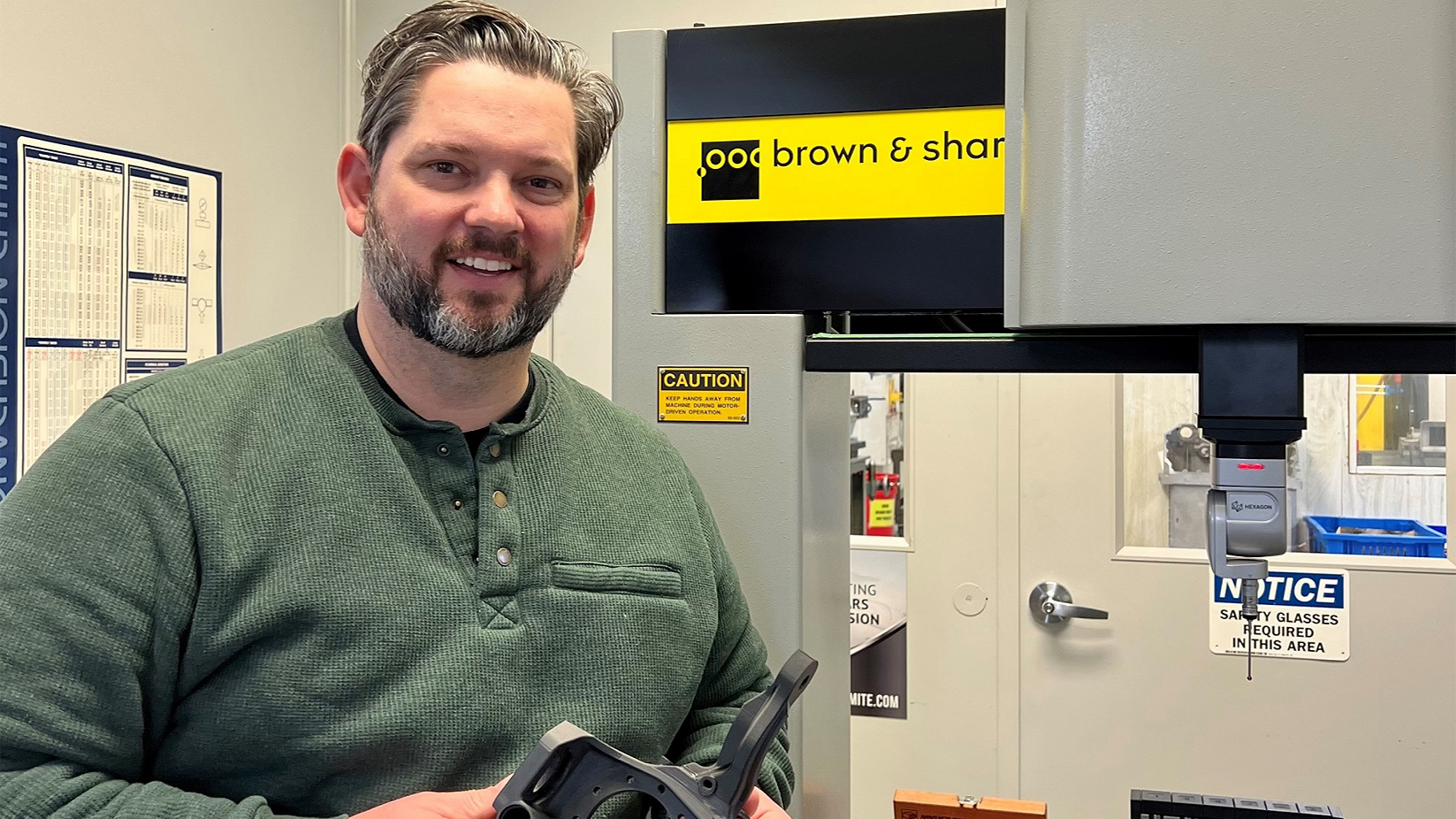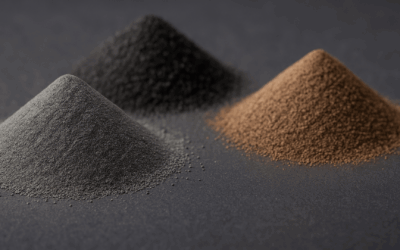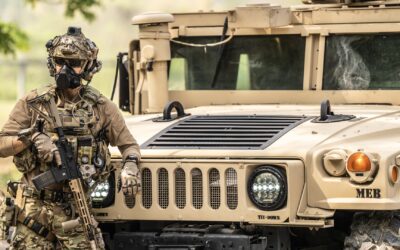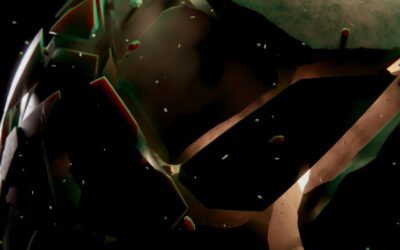Founded in 1968, Metalmite is a full-service machine shop and single-source vendor, incorporating both traditional and additive manufacturing to serve its clients. The business primarily operates in the automotive, heavy trucking, aerospace and military industries.
Over the last 55 years, the family-owned and operated company crafted a legacy of precision, earning a Prime Contractor certification from the U.S. Government. Enforcing this standard of quality is an armada of 3, 4, 5 and 6 axis CNC machines, in-house Wire EDM, CNC grinding machines and eight 3D printers at its Rochester, MI headquarters.
As a Project DIAMOnD member, Metalmite’s array of 3D printers was activated in response to the Russian Invasion of Ukraine in 2022, manufacturing tourniquets for the Ukrainian military. Project DIAMOnD is an additive manufacturing and distributed manufacturing initiative supported and funded by Oakland County.
Metalmite President Tom Gendich has been at the company for over 25 years, from sweeping the Metalmite shop floor in high school to taking on the role of president after his father Mike Gendich III retired in 2010.
Automation Alley sat down with Gendich to discuss 3D printing, Project DIAMOnD and the future of manufacturing.
What was your impression of 3D printing before you started working with a printer yourself?
The first 3D printing I saw was stereolithography. The part was very brittle and it broke in my hands. I thought it wasn’t very practical in manufacturing since it wasn’t a sturdy part. I thought of it more as a 3D representation, or something more for the office and engineering people to better picture what they want to have machined someday. We weren’t sure if there were applications for production.
As a user, what do you think about 3D printing today?
Daily we are printing things and using them around our shop. We print the end of arm tooling and use them on our robots, grippers to load parts. We print fixtures for our CMM and inspection lab. We also printed with Project Diamond the tourniquets for Ukrainian soldiers. Now I see things being used in a practical sense. There is a big use case for where these practical parts are being used.
What was your experience with Project DIAMOnD like?
I like the network and there is always strength in numbers.
We were able to get involved with the development of software that will be useful to members in the future. We did a lot of work showing how a job gets quotes, goes into the shop, processed and gets to the customer. We did some things with AI (artificial intelligence) to try to get things automated. That was fun.
We were also part of one of the groups to get into some algorithms for quoting 3D printing jobs where people can go on a website and get a price right away. It was good to see how other people are doing what we’re doing. It is also good to have a place of common meeting ground that brings us all together.
I feel like we proved the greater case study of it, but we haven’t seen it yet where the military or government has come to us as a network to make a bunch of parts right away. I think the pipeline is ready and there is a proof of concept.
Sometimes a narrative is pushed about additive manufacturing and CNC machining as opposing forces: People often talk about one replacing the other or one having more use in the “real” world. As someone who works with both of these technologies, what is your opinion?
It’s been really fun seeing where these things work together in industry. There are some private space manufacturers we are working with that are trying to figure out a new way to make a spaceship. We’ve been able to incorporate the 3D printers for them, especially due to the war in Ukraine: A high-nickel metal alloy comes from the Ukraine region, so when the war broke out there was a large concern in industry if we would be able to get that material.
In this case we were able to 3D print a part on a platform and machine it. We did some case studies and proved we could actually beat the cost and the time to manufacture it with this handoff from 3D print to CNC machining. We saved them 35% overall and were able to meet the timing to print it and machine it the same as we would’ve done with bar stock.
Everyone thinks 3D printing is slow with its production rate not being able to kick out 1,000 parts a day like an assembly line. They also think of it as expensive, since you can go to cast and forging and quickly machine a few features. But when you look at these case studies, you find it is cheaper and you can keep the timing the same. It was great to have these studies and know how we can use them.
You talk about Onyx as a nice 3D printing material. What makes this material suited for what you do?
Onyx is great because it is almost the strength of aluminum. A good example is a Michigan EV company client of ours that wanted us to make some parts when they didn’t have time to get plastic injection molds made for their steering mechanism part. They tried Onyx and never heard of what it was.
We printed a few samples. Then they put it to the test in production, came back and said “This is actually stronger and better than a plastic injected part.” Now the first 300 vehicles they put on the road today all have 3D printed parts from Metalmite, using those printers. We were able to show them that our product is strong and Onyx is strong in a real world situation.
If you can put this part in the steering mechanism of a vehicle and have it survive driving on I-696 then you know it is a strong part.
What new markets or opportunities has additive manufacturing brought to the table that weren’t there before?
We are a 55 year old company in the automotive, heavy trucking, aerospace and military field for the entire length of our company. We found every one of those industries have a use for a 3D printed part, whether it is in Onyx or in metal.
Right away we started looking for applications with those customers, but another market struck me as more interesting — We now get a lot of one-off inventors that come to us. We had a guy who wanted our help making a new fishing pole. Normally we look at that and think it won’t be worth our time with our shop rate of $90 an hour. Traditionally it would take 10 hours to set up and machine a part for his fishing pole. That’s a $900 fishing pole, nobody would want to spend that much. But what we’ve found is with how software is these days, inventors can make a solid model, upload it to our website and we can 3D print it and mail it to their house. It is almost like ordering on Amazon for them.
Now we have a whole market accessible that we didn’t know existed in making parts for home inventors.
What advice would you give a manufacturer that’s a novice in AM on how to get started?
What I’ve learned is that 3D printing is fantastic, but it is a tool and not the only tool. Some manufacturers start out of the gate with all 3D printers and no machining equipment. I think this leads some customers to 3D print at our shop and assume it won’t be finished. But I tell them why does it not have to be finished? We can print it and machine features that need to be tight. Then they’re surprised and I have to tell them “You know, we are a machine shop first with 31 machines and eight 3D printers.”
Overall I’d tell manufacturers not to start out locking themselves up with one method or the other. Think of both as tools to use together.
Sign up today for a free Essential Membership to Automation Alley to keep your finger on the pulse of digital transformation in Michigan and beyond.
Dennis Burck is Automation Alley's Digital Content Editor, responsible for the organization's content strategy and development. Dennis is a media-savvy professional who builds relationships with Automation Alley members and partners to find and create the best and most relevant content to increase Industry 4.0 awareness and drive traffic to Automation Alley's Industry 4.0 knowledge center.




